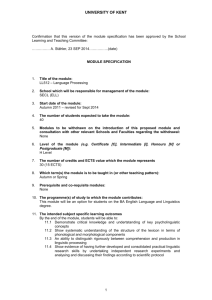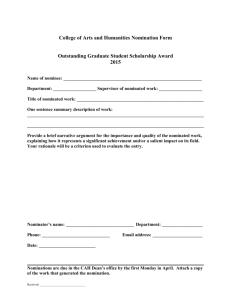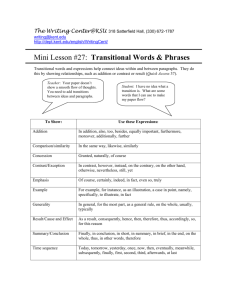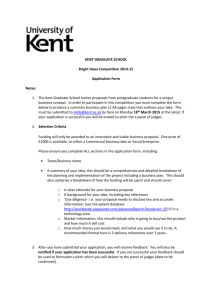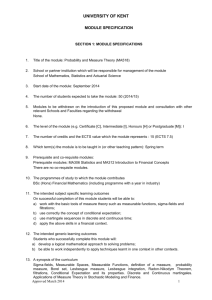Module Specification
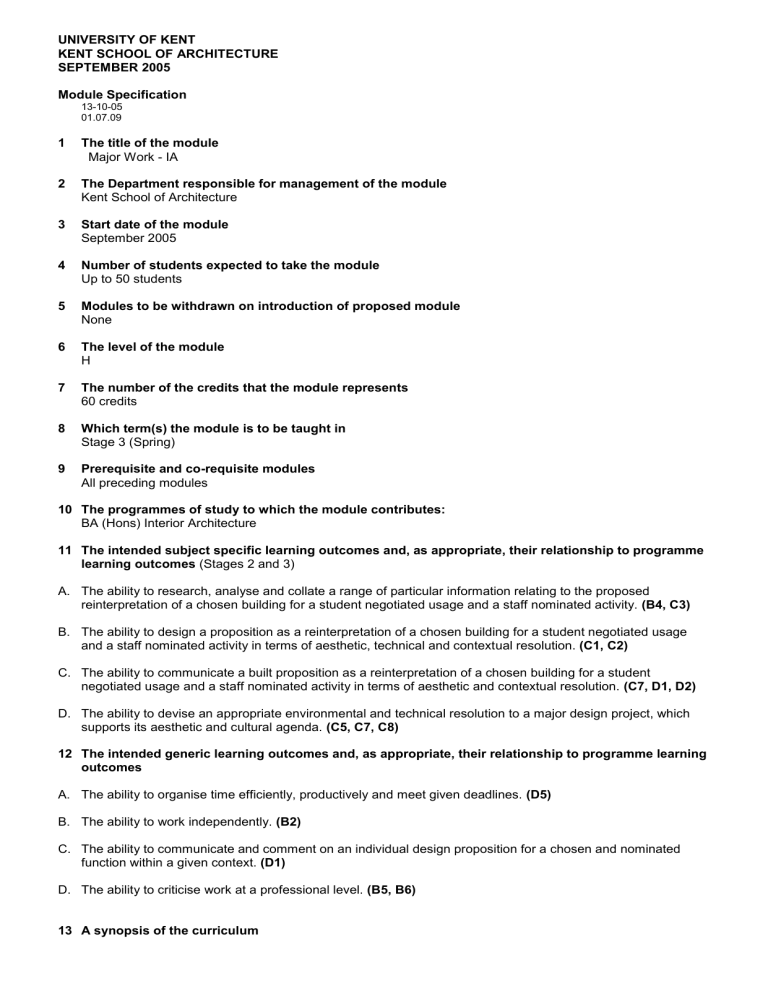
UNIVERSITY OF KENT
KENT SCHOOL OF ARCHITECTURE
SEPTEMBER 2005
Module Specification
13-10-05
01.07.09
1 The title of the module
Major Work - IA
2 The Department responsible for management of the module
Kent School of Architecture
3 Start date of the module
September 2005
4 Number of students expected to take the module
Up to 50 students
5 Modules to be withdrawn on introduction of proposed module
None
6 The level of the module
H
7 The number of the credits that the module represents
60 credits
8 Which term(s) the module is to be taught in
Stage 3 (Spring)
9 Prerequisite and co-requisite modules
All preceding modules
10 The programmes of study to which the module contributes:
BA (Hons) Interior Architecture
11 The intended subject specific learning outcomes and, as appropriate, their relationship to programme learning outcomes (Stages 2 and 3)
A. The ability to research, analyse and collate a range of particular information relating to the proposed reinterpretation of a chosen building for a student negotiated usage and a staff nominated activity.
(B4, C3)
B. The ability to design a proposition as a reinterpretation of a chosen building for a student negotiated usage and a staff nominated activity in terms of aesthetic, technical and contextual resolution.
(C1, C2)
C. The ability to communicate a built proposition as a reinterpretation of a chosen building for a student negotiated usage and a staff nominated activity in terms of aesthetic and contextual resolution.
(C7, D1, D2)
D. The ability to devise an appropriate environmental and technical resolution to a major design project, which supports its aesthetic and cultural agenda. (C5, C7, C8)
12 The intended generic learning outcomes and, as appropriate, their relationship to programme learning outcomes
A. The ability to organise time efficiently, productively and meet given deadlines. (D5)
B. The ability to work independently. (B2)
C. The ability to communicate and comment on an individual design proposition for a chosen and nominated function within a given context. (D1)
D. The ability to criticise work at a professional level. (B5, B6)
13 A synopsis of the curriculum
This module will require the student to propose and develop a comprehensive design solution for a reinterpretation of a chosen building. The distinct needs and requirements of the client are examined and are integral to the design concept. A full resolution of the design, in terms of aesthetic response, technical requirements and physical context, will be an integral part of this module.
14 Indicative Reading List
Adria, Miquel, et al., 10x10 2: 100 Architects, 010 Critics , (London: Phaidon Ltd, 2005)
Bloomer, Kent C., Moore, Charles Willard, Yudell, Robert J. Body, Memory and Architecture
(New Haven and London: Yale University Press, 1978)
Ibelings, Hans, Supermodernism (Rotterdam: Nai, 2002)
Riley, Terence. Light Construction , (New York: The Museum of Modern Art, 1996)
Rowe, Colin and Koetter, Fred, Collage City (Cambridge, Mass: MIT, 1978)
Sennett, Richard, Flesh and Stone: The Body and the City in Western Civilization (Harmondsworth: Penguin,
2003)
Weston, Richard. Materials Form and Architecture (London: Lawrence King, 2003)
An individual reading list will be generated for the module assignment brief that is an addition to the suggested reading list for Stage 3 Interior Architecture.
15 Learning and Teaching Methods, including the nature and number of contact hours and the total study hours which will be expected of students, and how these relate to achievement of the intended learning outcomes.
What you do
Classes and supervised studio
How long you do it for
3 hours each x 5=
15 hours
How this relates to the learning outcomes of the module
11: A, B, C, D
Group tutorials 1.5 hours each x
10= 15 hours
11: A, B, C, D
12: A
Module Seminars
Directed reading
Project development
Crit
2 hours each x 6=
12 hours
2 hours x 12=
24 hours
43 hours each x
12=
516 hours
6 hours each x
3=18 hours
11: A, B, C, D
11: A
12: B
11: A, B, C, D
12: A, B
12: C, D
Total Module hours = 600 hours
16 Assessment methods and how these relate to testing achievement of the intended learning outcomes.
Assessment
Method
Design ( 75%)
Critique at end of module
(student presentation, followed by open discussion and private assessment panel marking)
Technology & Environment (25%)
Critique at end of module
(student presentation, followed by open discussion and private assessment panel marking)
Learning Outcome
Students will be able to:
11: A, B, C
12: C, D
11: D
17 Implications for learning resources, including staff, library, IT and space
Architecture is a new subject area for the University and the School and Library have to be built up quickly in terms of learning resources. Computing equipment is on order and the School already has a Computing
Technician and a Computing Lecturer.
Studio spaces are being developed on the first floor of the Marlowe building where this Module will be taught.
Staff are available to teach this Module.
18 As far as can be reasonably anticipated, the curriculum, learning and teaching methods and forms of assessment do not present any non-justifiable disadvantage to students with disabilities.
The department recognises and has embedded the expectations of SENDA, and supports students with a declared disability or special (educational) need in its teaching, through the establishment of Inclusive Learning
Plans agreed between student, department and the Disability Support Unit. We will liaise with the Disability
Support Unit in order to provide specialist support where needed.
Where a particular disability adversely affects a student's ability to attain one of the module learning outcomes, the department will endeavour to ensure that alternative arrangements are made where justifiably possible.
Mor e specific information can be found the at University’s Disability Support Unit website http://www.kent.ac.uk/guidance/disabilitysupport.htm
